I have done two trips to Panama: one for a week and one lasting two weeks. Not everything made the cut in this itinerary, so what I will present here is a “best of” travel route focusing on the highlights.
In this 1 week itinerary, you will get an epic mix of history, culture, nature, and adventure in the beautiful country of Panama. I’ll also help you navigate your way around whether you’re traveling solo, with friends, or as a couple.
So, let’s dive in and discover what 1 week in Panama can offer!
| Day | Activities |
| 1 | Panama City tour |
| 2 | Boquete half-day hiking tour |
| 3 | Boquete coffee tour |
| 4 | River rafting, zip-lining, or hiking in Boquete |
| 5 | Visit the beaches in Bocas del Toro |
| 6 | Bocas del Toro island hopping |
| 7 | Bike, explore trails, relax at the beach |
Plan your trip to Panama
Day 1: Panama City
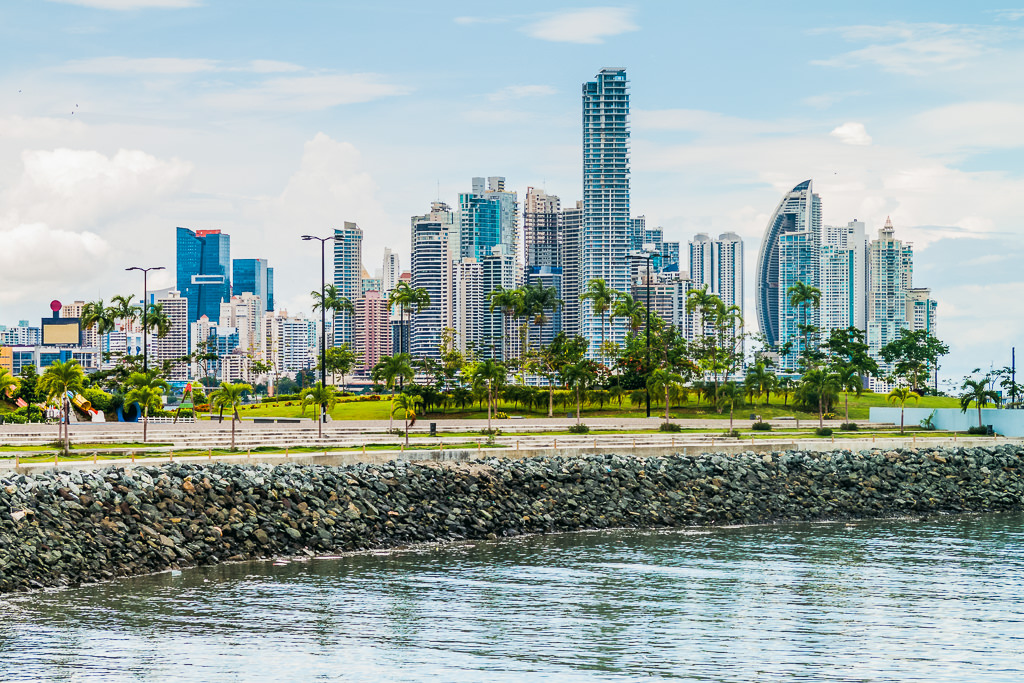
Your week-long adventure will start in Panama City, the capital city. While I think the city is only of moderate interest from a tourist’s perspective, it stands out for being a largely safe capital in Central America, so you can explore it without too many worries.
I have written more about whether it’s worth visiting Panama City, but in a nutshell, I think it’s worth at least spending your first day here. This modern city doesn’t have an inexhaustible list of things to do, but you should at the very least see the world-famous Panama Canal and the charming area called Casco Viejo.
Arriving in Panama City
You’ll fly into Tocumen International Airport. From there, it’s just a short ride into the city. The first thing you’ll notice is the contrast between the old and new parts of the city. On one hand, you have the modern skyscrapers, and on the other, you have the charming colonial architecture.
One of the best things about traveling to Panama is they have an excellent transport system, so it’s easy to get around. The network of metros and buses makes it simple to navigate your way around the city, and they are all very affordable.
You can also hail a taxi or grab an Uber in the city. I recommend taking an Uber if you have the option. Taxi drivers are known for raising the prices for tourists, so using Uber can save you some money and hassle.
Exploring Panama City
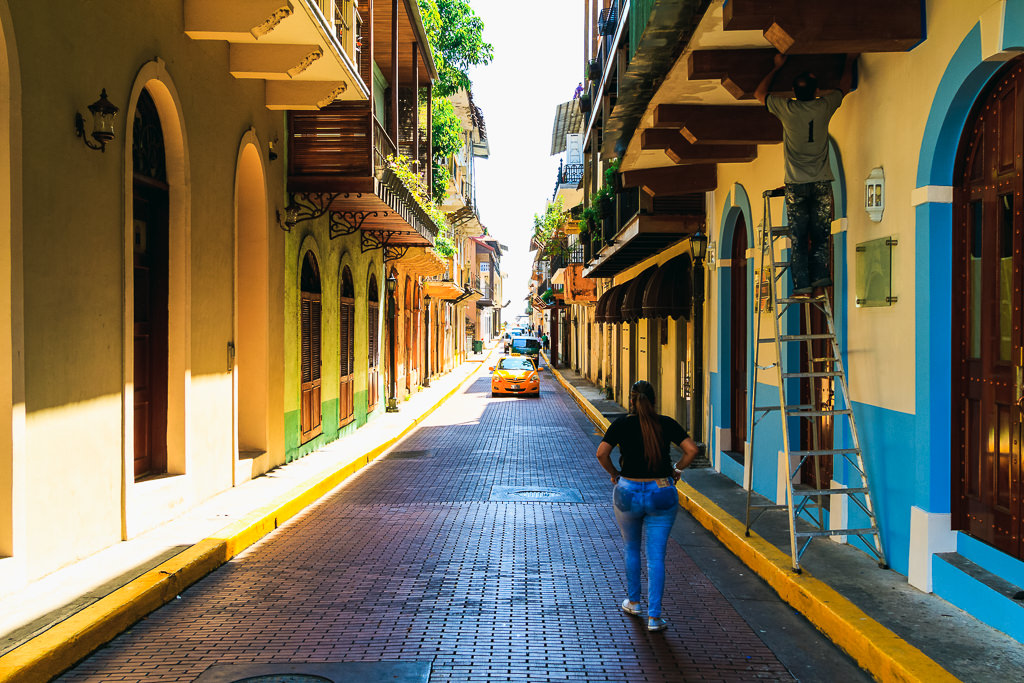
Kick off your exploration in Casco Viejo, the walled old center of Panama City, where every cobblestone seems to tell a story. Wander through the colorful streets, snapping pics of the stunning architecture and popping into chic cafes for a caffeine fix or a quick snack. Don’t forget to check out the quaint shops and art galleries that give this UNESCO World Heritage Site its modern-day vibrance.
This legends tour is a great way to fully experience the neighborhood in just a couple of hours. You’ll join a local on foot and discover the hidden gems and tasty treats of Casco Viejo.
While the colorful historical architecture is lovely, the Casco Viejo isn’t that big, so having a tour guide sharing local stories and historical context is a major benefit if you want to explore it properly.
Afterward, head to one of the rooftop bars for lunch, such as Sama Sky Lounge or at CasaCasco, from where you can get an excellent view of the Panama City skyline.
After lunch, make your way to the Panama Canal. This iconic marvel of engineering is a must-visit when in Panama City. If you visit independently, be sure to time it so that a ship is passing when you visit because without it, it’s not nearly as impressive! You can also join this tour and learn about the history and significance of this impressive waterway that connects the Atlantic and Pacific oceans.
I’ve stayed in the modern area of Panama City as well as in the Casco Viejo. With one day in the city, I definitely recommend staying in the latter. The old town is brimming with charming boutique hotels and there are even some budget options. I recommend staying at La Concordia; the vibe is charming, and the decor is a mix of vintage and modern.
Day 2-4: Boquete
On day 2, it’s time to leave the city and head to the charming mountain town of Boquete. Known for its natural beauty, coffee plantations, and adventure activities, it’s the perfect escape from the hustle and bustle of Panama City.
How to Get to Boquete
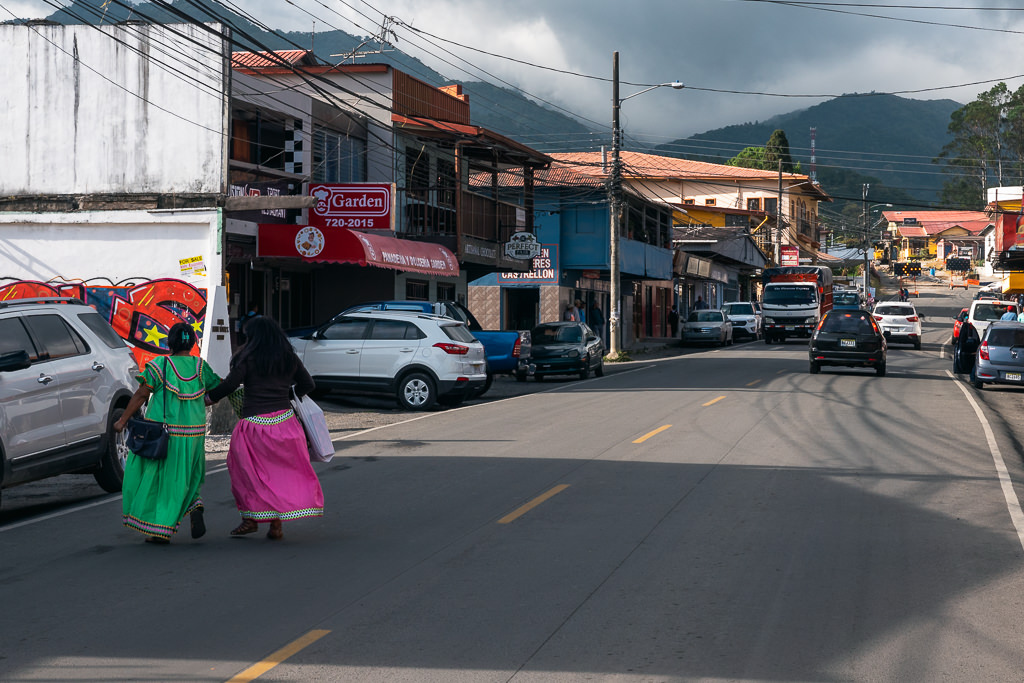
Getting to Boquete is an adventure in itself, with winding roads and breathtaking views of the countryside. You can get there in a few different ways:
- By air: The quickest way to reach Boquete is by taking a domestic flight from Panama City to the nearby city of David. It’s also the most expensive, costing a little over $100. From there, you can take a bus or taxi to Boquete. The bus only costs about two dollars from David and takes about an hour.
- By rental car: This gives you the most flexibility to stop at different viewpoints and explore at your own pace. You can search for rental cars in Panama City here.
- By bus: The public buses in Panama are inexpensive and reliable. Just be prepared for a longer journey, as it can take around 7 hours from Panama City to Boquete. The bus leaves from Albrook station and goes to David, where you will have to change buses before reaching Boquete.
- By shared shuttle: Many companies offer shared shuttle services that will pick you up from your hotel in Panama City and drop you off at your hotel in Boquete. There is a great option for those who don’t want to deal with the hassle of driving or navigating public transportation but don’t want to pay for a private taxi. By taking a shared shuttle you will skip having to transfer to David and will go directly to Boquete
Hiking in Boquete
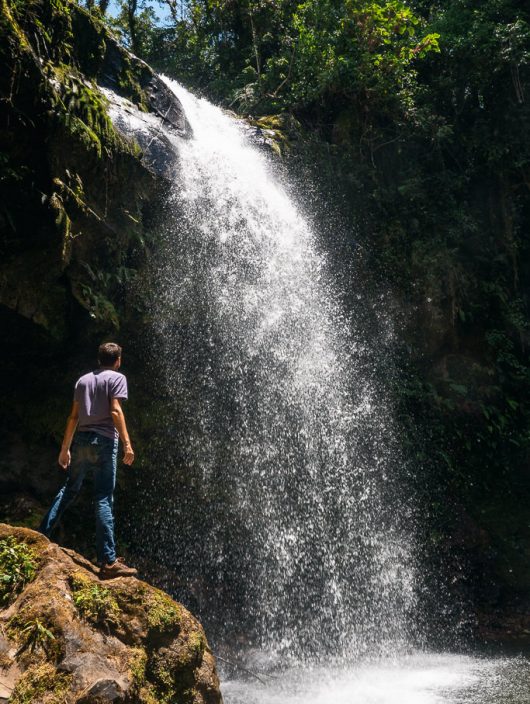
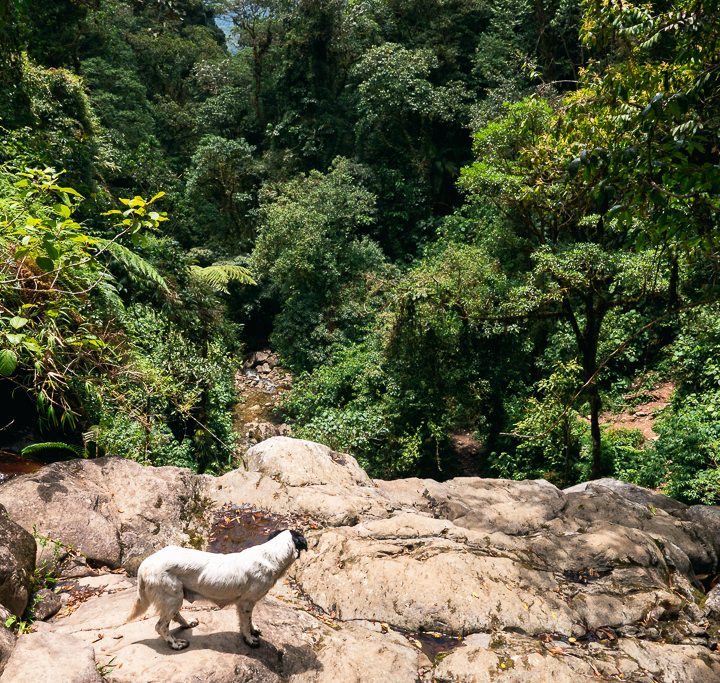
Once you arrive in Boquete, you’ll immediately notice the cooler climate and fresher air. It’s a little slice of paradise for nature lovers, with plenty of hiking trails and waterfalls to choose from.
And if you’re a coffee lover, you’re in luck – Boquete is known for its world-renowned coffee plantations.
Most likely, you’ll be exhausted from the travel unless you decide to take a flight, so spend the first day relaxing and acclimating to the slower pace of this charming town.
Wake up on day 3, energized and ready to start your adventures. I recommend having a quick breakfast before heading out for a morning hike in the cloud forest. A lot of people opt to do this on their own as there are so many different trails to choose from, but if you’re not familiar with the area or want a guide, this half-day tour is a great option.
You’ll head to the start of Pipeline Trail, an easy and scenic hike through the forest with plenty of opportunities to spot wildlife like colorful birds, monkeys, and even sloths if you’re lucky.
Try Boquete’s Famed Coffee

After a morning of working up a sweat, head back to town for a tasty lunch at one of the many cafes or restaurants. You can’t go wrong with any place you choose – but my favorite is The Fish House.
Don’t miss the chance to sip on a locally roasted coffee while taking in the beautiful views of the mountains and surrounding landscape.
Better yet, you can try one of the world’s best coffee varieties: geisha coffee, known for its incredible aroma and flavor. You’ll find these beans in other parts of the world at a high price tag, but here, you can enjoy it for a fraction of the cost. The charming and cozy La Vuida Del Cafe is my favorite cafe to have a cup of the geisha bean.
You can also visit local coffee farms, such as Finca dos Jefes. Keep in mind they don’t really do ‘walk-ins’ though. While exploring the area by motorbike with some friends I stopped by this coffee farm, but they weren’t so keen on letting us in without an appointment. Most of the coffee farms only accept visitors who are on a local tour.
You can also take a guided tour at Finca Casanga. The experience here is very hands-on, informative, and interactive!
Adventure Activities in Boquete
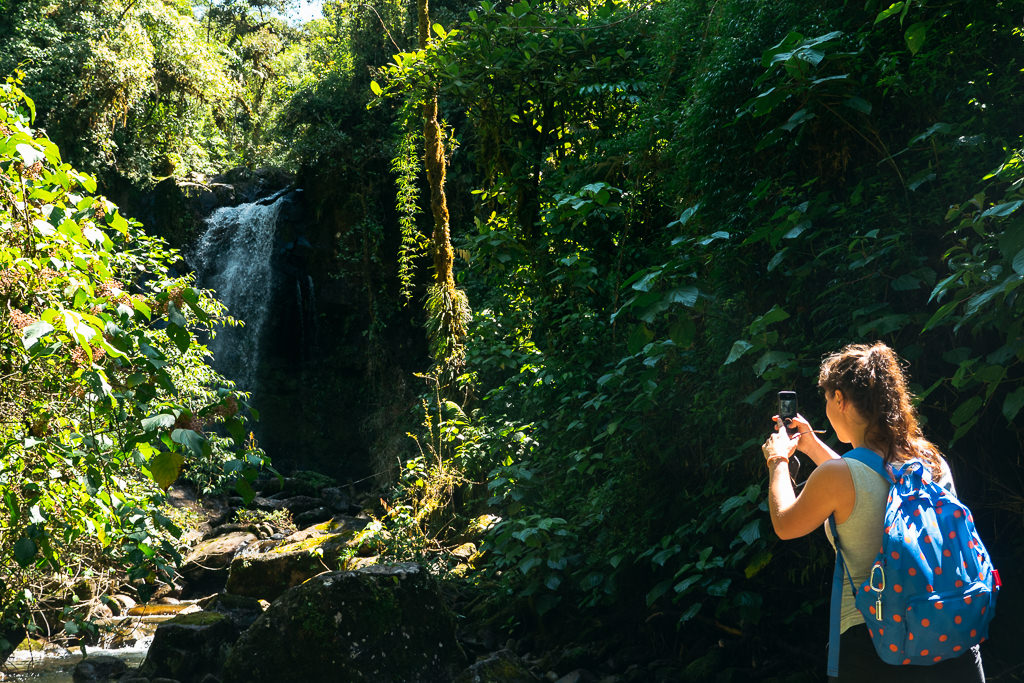
On day 4, you’ll want to wake up and immediately head to Olga’s for breakfast. This is a must-stop spot for anyone visiting Boquete. Olga herself will greet you with a warm smile and the most mouth-watering breakfast options from savory omelets to sweet pancakes.
After breakfast, it’s time to get your adrenaline pumping with some outdoor activities. One of the coolest things to do in Boquete is to paddle down the Chiriqui Viejo River with this awesome tour company. Elsewhere I’ve done Class IV rapids, which honestly was a little extreme at times, but the rapids here are Class II – III, which is just about perfect.
If rafting isn’t your thing, you can also go zip-lining through the cloud forest or go hiking to hidden waterfalls. I loved doing the Lost Waterfalls trail, which snakes through a lushly jungled valley and passes by three gorgeous waterfalls.
In Boquete, I recommend staying at the Boquete Garden Inn. The views of this boutique hotel are stunning as you’re surrounded by lush greenery and colorful flowers.
Day 5–7: Bocas Del Toro

On day 5, you are headed to pretty much everyone’s favorite spot in Panama, Bocas Del Toro. These islands among the mangrove forests are a perfect mix of relaxation and adventure. Located on the Caribbean side of Panama, they are known for their crystal-clear blue waters.
How to Get to Bocas del Toro
Getting to Bocas from Boquete isn’t too hard because so many travelers are coming this way. I recommend leaving as early as possible from Boquete, as the drive takes 4 hours, and you don’t want to miss out on a full day in Bocas! The best way to get there is by booking a shuttle. Caribe Shuttle is a great option that is cheap and reliable, but you can ask your accommodation in Boquete to book any shuttle for you.
Where to Stay in Bocas del Toro
The main island of Bocas will immediately welcome you with a laidback Caribbean vibe with colorful buildings, reggae music playing in the streets, and delicious seafood.
But there are actually 9 main islands in the Bocas del Toro archipelago, each with its own unique vibe and attractions. The most common islands to stay in are Isla Colon and Isla Bastimentos, but there are little eco-resorts and lodges sprinkled all over the archipelago.
Isla Colon is the most convenient base. Its southern peninsula is home to Bocas del Toro Town, which has all manner of bars, restaurants, and transportation connections. Consider staying at Barrbra BnB Over the Sea, which is on the quieter west side of the peninsula, but within 5-10 minute walking distance from the lively town.
Prefer to be closer to nature? Then consider staying on the big island of Colon itself. Two amazing accommodation options here are the cleverly named Nowhere and Somewhere sister hotels, which are a stone’s throw from a gorgeous natural and unspoiled beach where sea turtles hatch, while still being a short taxi ride from the town.
Isla Bastimentos is much more spread out, having a more secluded and ‘remote’ feel. It’s still fairly easy to reach accommodations here thanks to the water taxis departing from Bocas del Toro Town. If you search around and find, say, some super dreamy ecolodge in this area (or on Isla Solarte or Isla Cristobal) you can still go for it.
However, with a limited number of days, the logistics of staying in Isla Colon are a bit easier. Avoid staying in the small village of Bastimentos, which has had some security issues at night. It’s nicer anyway to stay in one of the B&Bs or ecolodges that‘s surrounded by jungle.
What to Do in Bocas del Toro

On Day 1 in Bocas, depending on what time you arrive, head straight to the beach!
The most famous beach is Starfish Beach, known for its crystal clear water and abundance of starfish. It’s located on the opposite side of the island from town, but it’s worth the trip. You can either grab a taxi or rent a bike to get there. But remember that getting a taxi back to town may be difficult, so arrange a ride beforehand if you don’t want to bike back.
After some beach time, head back to town for dinner and drinks. There are plenty of restaurants and bars, but one must-try is the famous El Ultimo Refugio. Located right along the beach, this restaurant is so yummy and has some epic views.
Day 2 is all about island hopping and exploring the beautiful surrounding islands. The best way to do this is by booking a tour through one of the companies on the island. Make sure to shop around, as loads of companies offer the same tours at different prices.
Popular stops include Red Frog Beach on Isla Bastimentos, Zapatilla Cayes for snorkeling, and Dolphin Bay to catch a glimpse of wild dolphins. Most tours are around 6 hours long, so bring some sunscreen and prepare for a day of fun in the sun.
After a day on the water, head back to town for dinner and drinks. Try some local Panamanian cuisine like sancocho (chicken soup) or ceviche. Octo is a great restaurant to go to, offering fresh seafood and a laid-back atmosphere.
For Day 3, wake up early and enjoy a gorgeous sunrise from your accommodation. If you’re feeling adventurous, rent a bike and explore the island’s lush jungle trails, or spend the morning soaking up the last day of sun on the beach.
Heading Back to Panama City
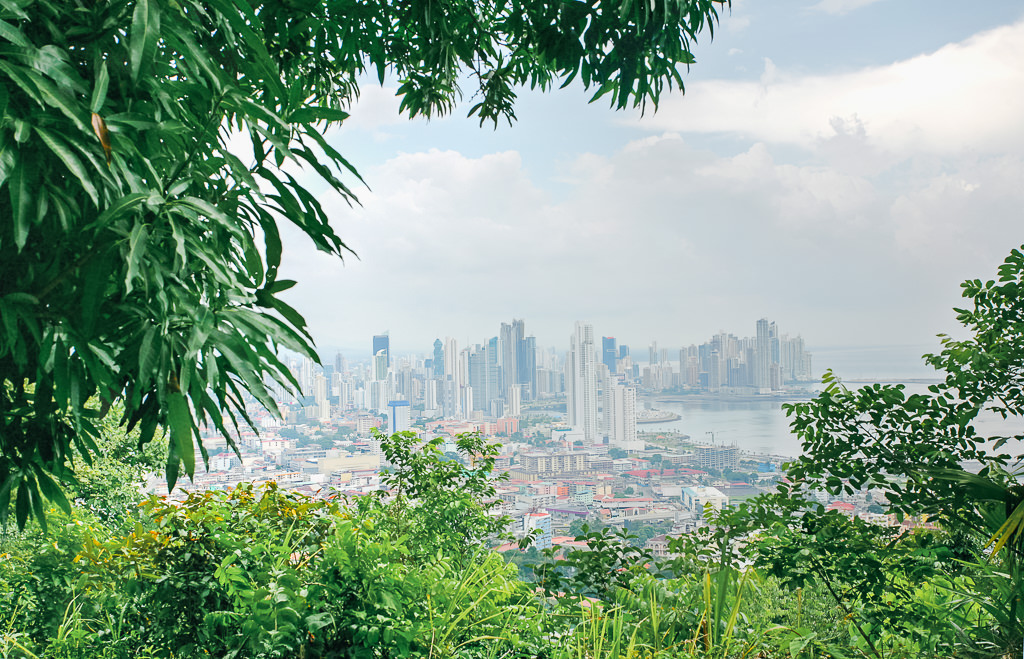
Depending on how you’re heading back to the mainland, you’ll need to be a little flexible on your last day. If you’re taking a flight, the tiny airport is located on Isla Colon, and check-in is an hour before departure.
For those taking a boat back, you’ll take a water taxi from Bocas del Toro town to Almirante and then catch a 6-hour bus to Panama City. (I recommend the flight.)
And there we have it: my epic 1-week itinerary for Panama. From the city to the beach, you’ll absolutely fall in love with this small country in Central America.
Some links may be affiliate links, meaning I may earn commission from products or services I recommend. For more, see site policies.
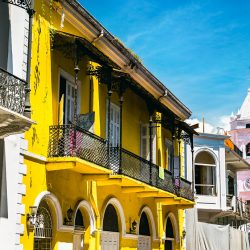
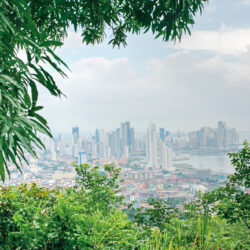




0 comments
Leave a comment
Your email address will not be published. Comments are manually moderated.